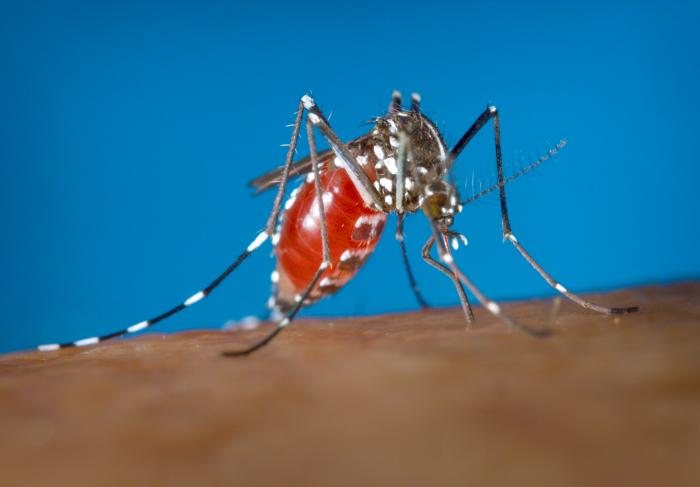In a follow-up on the locally transmitted dengue fever cases reported in the Region of Murcia, Spain (HERE and HERE), the Ministry of Health of Murcia and the National Center for Microbiology (CNM) of the Carlos III Institute have confirmed a father and son have been confirmed dengue positive without a travel history, according to a local media account (computer translated).

Image/CDC
This brings the total autochthonous dengue cases to five.
The tests carried out in the CNM have confirmed that the last two cases “are directly related to the previous ones since the sequencing of the virus is identical”.
Three weeks ago, three members of the same family who vacationed in August, first in Murcia and then in Cádiz, contracted the mosquitoborne viral disease. Therefore, a search was started in both areas that has now determined that the contagion occurred in Murcia.
The only competent vector for the transmission of the virus in Spain is the Aedes albopictus (tiger mosquito), which is widely spread in the country and especially in the Mediterranean area.
Dengue is a viral infection transmitted by the bite of an infected mosquito. There are four closely related but antigenically different serotypes of the virus that can cause dengue (DEN1, DEN 2, DEN 3, DEN 4).
- Dengue Fever (DF) – marked by an onset of sudden high fever, severe headache, pain behind the eyes, and pain in muscles and joints. Some may also have a rash and varying degree of bleeding from various parts of the body (including nose, mouth and gums or skin bruising).Dengue has a wide spectrum of infection outcome (asymptomatic to symptomatic). Symptomatic illness can vary from dengue fever (DF) to the more serious dengue hemorrhagic fever (DHF).
- Dengue Hemorrhagic Fever (DHF) – is a more severe form, seen only in a small proportion of those infected. DHF is a stereotypic illness characterized by 3 phases; febrile phase with high continuous fever usually lasting for less than 7 days; critical phase (plasma leaking) lasting 1-2 days usually apparent when fever comes down, leading to shock if not detected and treated early; convalescence phase lasting 2-5 days with improvement of appetite, bradycardia (slow heart rate), convalescent rash (white patches in red background), often accompanied by generalized itching (more intense in palms and soles), and diuresis (increase urine output).
- Dengue Shock Syndrome (DSS) — Shock syndrome is a dangerous complication of dengue infection and is associated with high mortality. Severe dengue occurs as a result of secondary infection with a different virus serotype. Increased vascular permeability, together with myocardial dysfunction and dehydration, contribute to the development of shock, with resultant multiorgan failure.
Related:
- Poland: Measles outbreak in Mazowsze, ‘The situation is fully controlled’
- Outbreak News This Week Radio Show 11-4-18
- Wisconsin: 1st human St. Louis Encephalitis case reported in the state in decades
- Pneumonia is the 3rd biggest killer in the Philippines, accounting for 10 percent of deaths
- Dengue cases top 70,000 in Thailand in 1st 10 months
- Ukraine MOH: More than 35,000 measles cases this year, 11 children died
- Madagascar: Additional plague case reported in Tsiroanomandidy, 38 since August

